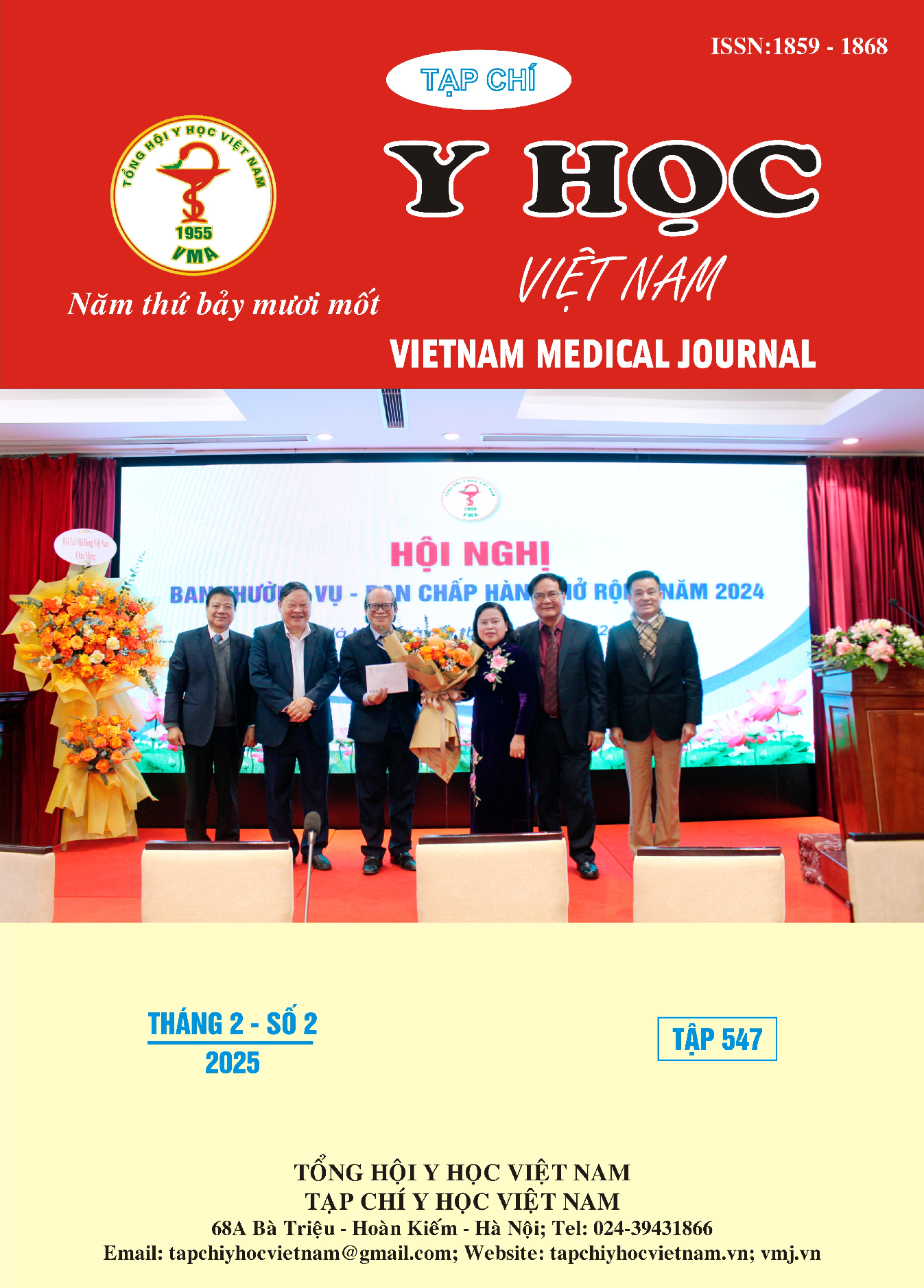CURRENT STATUS OF ANTIBIOTIC RESISTANCE OF PSEUDOMONAS AERUGINOSA STRAINS CAUSING PNEUMONIA AT THE INTENSIVE CARE UNIT OF BACH MAI HOSPITAL IN 2024
Main Article Content
Abstract
Objective: The study aims to investigate the antibiotic resistance of Pseudomonas aeruginosa strains causing pneumonia at the Intensive Care Unit – Bach Mai Hospital. Subjects and Methods: A prospective descriptive study was conducted on 91 adult patients treated at the Intensive Care Unit – Bach Mai Hospital, who were diagnosed with pneumonia according to CDC 2023 criteria and had positive microbiological results for Pseudomonas aeruginosa from lower respiratory tract specimens. Patients with a treatment duration of less than 72 hours, co-infection of Pseudomonas aeruginosa with other bacteria, and cases where Pseudomonas aeruginosa was a colonizing microorganism were excluded. Results: Among the isolated Pseudomonas aeruginosa strains, 77.4% were susceptible to ceftazidime/avibactam, while the resistance rate to meropenem was as high as 72.5%. The rate of Pseudomonas aeruginosa strains resistant to difficult-to-treat antibiotics was 58.1%. Among the strains resistant to meropenem, the susceptibility rate to ceftazidime/avibactam was 66.7%, and to ceftolozane /tazobactam was 10.6%. Conclusion: The study highlights the high rate of antibiotic resistance of Pseudomonas aeruginosa in the Intensive Care Unit, with a considerable resistance rate to carbapenem antibiotics, indicating the necessity for new treatment strategies for pneumonia caused by Pseudomonas aeruginosa in critically ill patients.
Article Details
Keywords
pneumoniae, Pseudomonas aeruginosa, intensive care.
References
2. CDC, “Antibiotic resistance threats in the United States, 2019,” Atlanta, Georgia, Nov. 2019. doi: 10.15620/cdc:82532.
3. E. Tacconelli, E. Carrara, A. Savoldi, D. Kattula, and F. Burkert, “global priority list of antibiotic-resistant bacteria to guide research, discovery, and development of new antibiotics.” [Online]. Available: http://www.cdc.gov/ drugresistance/ threat-report-2013/
4. L. B. Rice, “Federal Funding for the Study of Antimicrobial Resistance in Nosocomial Pathogens: No ESKAPE,” J Infect Dis, vol. 197, no. 8, pp. 1079–1081, Apr. 2008, doi: 10.1086/ 533452.
5. H. T. Lê , “Khảo sát đặc điểm lâm sàng, cận lâm sàng và căn nguyên vi khuẩn gây viêm phổi liên quan thở máy tại khoa Hồi sức tích cực và Chống độc Bệnh viện Đa khoa tỉnh Vĩnh Phúc,” Tạp chí Y học Việt Nam, vol. 541, no. 2, Aug. 2024, doi: 10.51298/vmj.v541i2.10755.
6. A.-P. Magiorakos et al., “Multidrug-resistant, extensively drug-resistant and pandrug-resistant bacteria: an international expert proposal for interim standard definitions for acquired resistance,” Clinical Microbiology and Infection, vol. 18, no. 3, pp. 268–281, Mar. 2012, doi: 10.1111/j.1469-0691.2011.03570.x.


